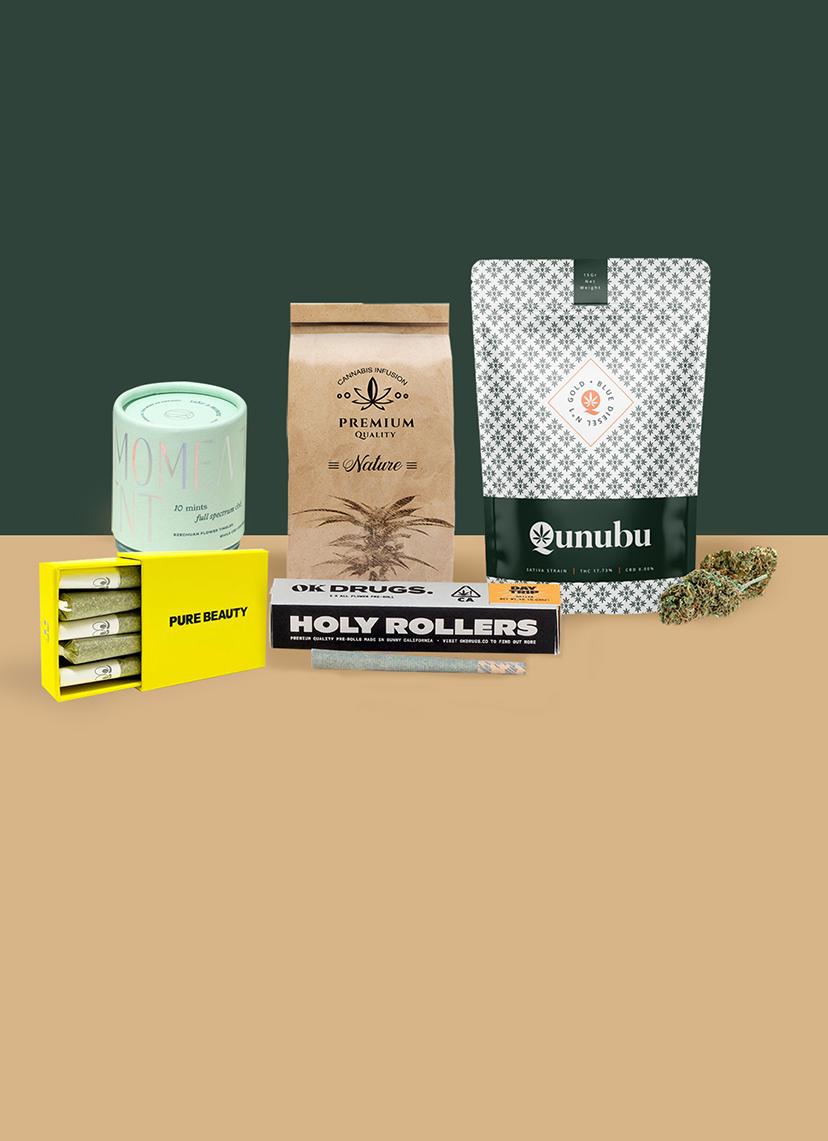9. How To Grade Pot?

(Product shot from 2018, Port Townsend, WA.)
Everything that can be counted does not necessarily count, everything that counts cannot necessarily be counted.
-Albert Einstein Tweet
To ensure you’re stocking the best products, even if you have a qualified category manager making the decisions, it’s best to have a basic understanding of what makes the experience of consuming cannabis good or bad for the majority of consumers.
As we’ve discussed in this book, a lot of marketing is done around the misconception that the percentage of THC in your product is the most important factor in the effect that you will feel.
As we’ve covered, much of the effect comes from the interplay between all of the cannabinoids, terpenes, and other plant components. Additionally, your experience is also colored by your mindset, body chemistry, what you ate that day, where you are, what you’re doing, etc. All of these things will have an impact on how much you enjoyed and how you remembered the ‘high’.
Let’s talk about what you should look for…
A Killer Cure Job!

What's in a name? That which we call a rose by any other name would smell as sweet.
-William Shakespeare Tweet
Before we begin, please note that even if a product gets into your hands as perfectly cured flowers, you can easily still (and probably will) destroy them, so be sure to have good overnight storage space with proper environmental and lighting controls.
The best way to tell if flowers are cured properly is to see if they pass the ‘smell’ test; literally, you want to see if they smell good.
If you are comparing two flower samples from the same strain and harvest, then the sample which is less green would be the one that is more cured. This is the result of the chlorophyll breaking down during the cure through oxidation. The degradation of the chlorophyll is a naturally occurring process that growers can exploit properly to produce craft and artisan cannabis flowers ready for combustion.
As we’ve been stressing throughout this guidebook, terpenes are everything when it comes to quality control for all-natural cannabis flowers. These are what give the flowers their unique bouquet, and if they have been well retained then this should be apparent in a beautiful body and aroma of well-cured cannabis flowers. Poorly cured flowers don’t have unique notes with fruity, sweet tones, or smell like skunk, but instead, this ‘grass’ will smell a lot more like actual grass.
While only a few states currently require brands to list the terpene content of their products, it is a best practice that retailers should demand from their vendors regardless.
As we’ve mentioned before, commercial farming is hard, so don’t be afraid to give your growers constructive feedback. In some cases, they may be new to the industry and could benefit from your tip.
This is where having great relations and knowing how to talk to your vendors comes in handy. If you can communicate to them effectively how they can make better products (for instance by learning from the curing section of this book), they may be willing to listen, and then come back to surprise you after their next harvest with something truly amazing that you’ll be proud to stock at your store and offer to your customers!
In some cases, it can be challenging to give constructive feedback to someone that doesn’t want to listen, thinks they know everything, or has a really, really, really crappy product.
It can be tough to communicate to someone that everything that they thought they knew about their vocation is wrong, and that their product quality is lower than the barrier for entry working at Red Lobster.
This is where it pays to learn how to share helpful insights in a way that doesn’t sound overly discouraging or come off as mockery (even if this is what you are thinking).
Taste and Effect

For art to exist, for any sort of aesthetic activity to exist, a certain physiological precondition is indispensable: intoxication.
-Friedrich Nietzsche Tweet
Needless to say, no matter how good the weed looks or smells, if it tastes bad or doesn’t get you high, then you have a serious problem. It’s important that someone is available to actually smoke the marijuana and provide some ground truth on this.
Trim?

Tragedy is when I cut my finger. Comedy is when you fall into an open sewer and die.
-Mel Brooks Tweet
While some consumers like a ‘little sugar leaf’, many stores are sticklers about getting a tight trim job on their products. Unfortunately, the economics of hand trimming don’t work at today’s wholesale prices, and there is no machine on the market that we’ve seen that can truly replicate the artisan look of hand trimming.
Oftentimes, the best you can do is either leave a little leaf on the bud, or reduce your front-end labor and start with a trimming machine, but finish with a hand trim.
There are many trimming machines on the market, and most of them are pretty similar.
Troy had good luck with a GreenBroz 420 trimmer, which features a closed chamber where the flowers pass over a metal grate with a cutting blade underneath. As the flowers slowly tumble over the grate, the outer leaves get cut. The flowers continue to spin and get tighter with each pass as lighter pieces of bud are separated by gravity, falling through a chute into a bin waiting below.
In terms of whether or not to throw in a final hand job after machine trimming, you have to take into account how much your customer is willing to pay you. If they browbeat you to get a below-market deal, you may not want to eat the loss on their behalf.
Packaging

The primary types of flower packaging on the market are glass or plastic jars and mylar or poly bags. The packaging process can be made more efficient with automated equipment like a flow-wrap packaging machine that weighs and bags the flowers for you, and a labeling machine that not only rolls the exterior label on your glass jar, but also etches the variable information on your label with a laser! How cool is that?
On the other hand, the set up for automated capital equipment like this is pricey. Alternatively, you can run a small, hand packaging operation on your own – relatively cheaply.
In this case, instead of using large expensive machines, you will use a lot of hand- and foot-pedal tools, like a heat gun and an impulse or conveyor sealer.

No need reinvent the wheel!
Reach out to our team for guidance and to benefit from our experience.
Key Chapter Takeaways
The Do’s and Don’ts of the Dope Industry
- Do– Let your nose lead the way!
- Do– Look at the trichomes, hairs, colors and visual appeal of the flower
- Do– Have your product manager smoke a flower product. Looks and smell alone aren’t good enough quality markers without checking for taste.
- Don’t– Be biased by your own experience, a desirable price point, or a personal relationship with the grower
- Don’t– Forget to set timers for your lights
- Don’t– Forget to consider the packaging as part of your assessment